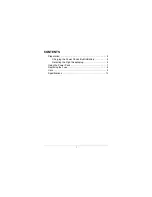
10
Always leave some slack in the wires before cutting
to length. All connections to the EP are made in the
same way:
1. Carefully strip 1/4 – 3/8” of insulation from the
wires. Twist the strands tightly and neatly
following the natural twist of the wires.
2. Unscrew the cage-clamp screw about 10 turns.
This insures the jaws of the clamp are open.
3. Insert the wire into the terminal opening making
sure no strands are splayed out. Tighten the
screw. Do not use excessive force.
4. Tug on the wire to verify a secure connection.
Follow the Wiring Diagram in Figure 7.3.1
to make
all connections.
Pay close attention to the battery
wiring.
1.
With mains power and the INPUT switch
OFF
, make connections to the AC input. The
“
N
” terminal should be used for L2 in high
voltage AC systems. In DC powered systems,
the “
N
” terminal should be used for the negative
polarity and the “
L
” for the positive.
2. Make the alarm connections, if used.
3.
With the positive wire AT THE BATTERY
disconnected
, make the battery connections to
the EP. Double check polarity, and make the
final connection at the positive battery terminal
last. There will be small spark as the unit draws
a small current from the battery.
REVERSE
HOOK-UP WILL BLOW THE FUSE.
4.
With the OUTPUT breaker OFF,
make the load
connections, again checking for correct polarity.
5. See Section 8.1 for Power-up information.
Figure 7.3.1 – Wiring Diagram
































